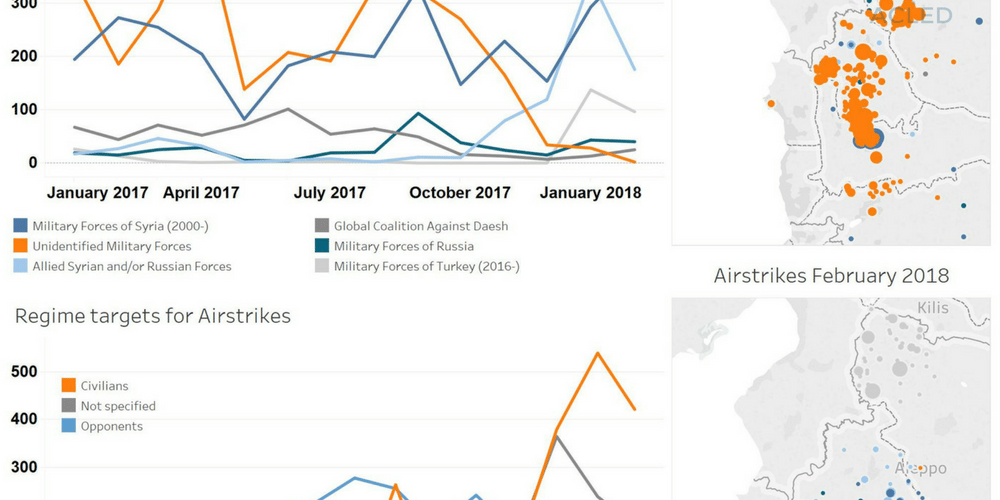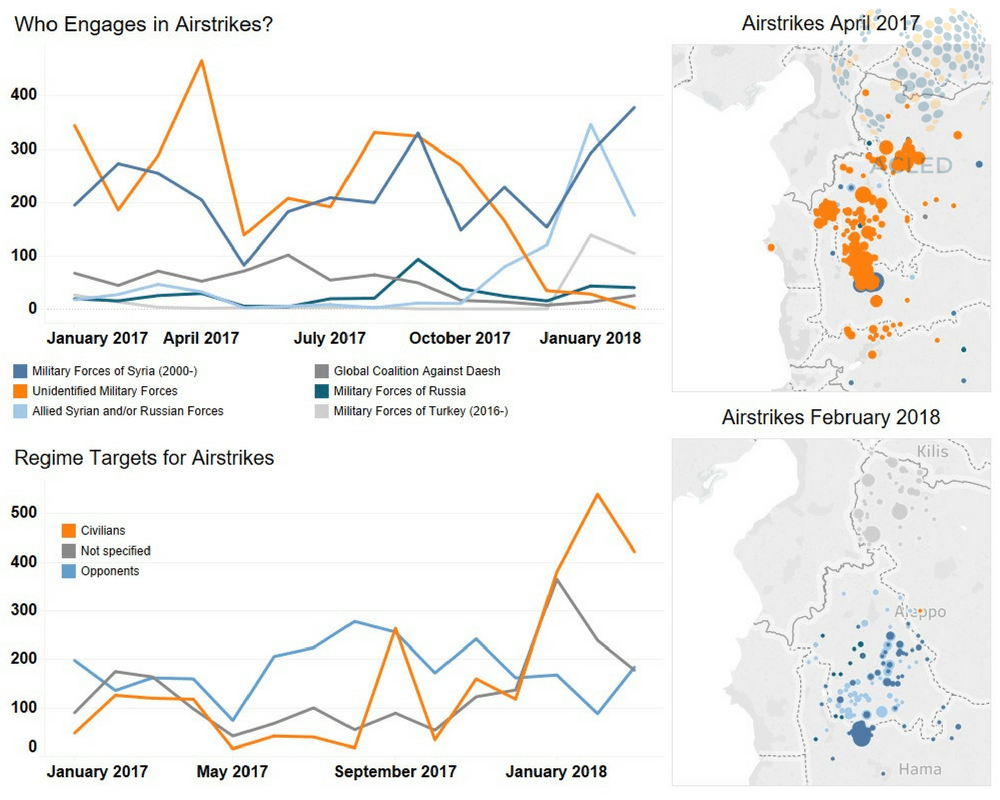A feature of modern conflict is the frequent usage of airstrikes. Airwars (an ACLED partner) notes that Coalition and Russian airstrikes have declined since the last quarter of 2017 (while the preceding three quarters showed very high activity).[1] ACLED airstrike data supplements this insights by combining similar events by other actors such as Turkey, Israel and Jordan as well as the regime.[2] 34% of all violence in Syria is the result of airstrikes, and they remain common in Syria. Moreover, in the past two months, the regime has stepped up bombardments, possibly filling the void left by the Coalition and Russians (see figure 1).
There are at least two main reasons for the higher incidence of regime airstrikes. First, it may be a result of reporting: there are fewer incidents where it is unclear who is responsible for an attack. If comparing April 2017 with February 2018, April had 466 unidentified airstrikes, while February 18 had 3 (see figure for Idleb-Aleppo). Either reporting has improved and agencies are increasingly able to determine culpability or that those responsible have become more open in making themselves known. A second reason is that the regime has clearly changed tactics. In early 2017, regime airstrikes targeted villages and opponents while civilians were not the direct targets (except for a major peak in September). However, since December 2017, direct regime airstrikes on civilians have greatly increased in number (not only in Rural Damascus but also in Hama/Idleb border). Regime airstrikes are clearly the renewed mode of violence in Syria.
Note: ACLED data does not usually recognize airstrikes separately (these are captured in the remote violence category, alongside incidents like shelling). Our coverage of the Syria conflict is slightly altered since we rely heavily on local partners for information. A separate file with a specific ‘airstrike’ column was created to allow compatibility with the collection efforts of some of our partners.
[1] https://airwars.org/news/airwars-annual-assessment-2017/
[2] As a separate file available to our partners and upon request. For more information contact [email protected]







